|

Public cooperation vital to combat dengue
By Thulasi MUTTULINGAM
The menace of dengue still looms large over Sri Lanka, a fact noted
by President Mahinda Rajapaksa himself in appointing of a special task
force to curb the menace. The task force functions at National Level
with the President at the head, with several affiliated ministries under
him, right down to the grassroots level with village level committees
and volunteer bodies, to tackle the problem.
 "Since it is a complex problem cutting across various sectors, the
Health Ministry alone cannot be responsible for curtailing the problem,"
says Dr. Nimalka Pannilahetti, Consultant Community Physician at the
National Dengue Control Unit. "Since it is a complex problem cutting across various sectors, the
Health Ministry alone cannot be responsible for curtailing the problem,"
says Dr. Nimalka Pannilahetti, Consultant Community Physician at the
National Dengue Control Unit.
Various ministries have been called on to collaborate with the
Ministry of Health, at national level, to help control dengue. The
relevant ministries are Environment, Education, Defence, Disaster
Management, Public Administration and Home Affairs, Local Government and
Provincial Councils as well as the Media.
These committees are at four other levels; the Provincial Committee,
the District Level Committee, the Divisional Level Committee and the
Village Level Committee.
The idea is mobilise everyone from the national level to the
grassroots level, with a means of cohesion and communication
horizontally and vertically, along with responsibilities and
accountabilities.
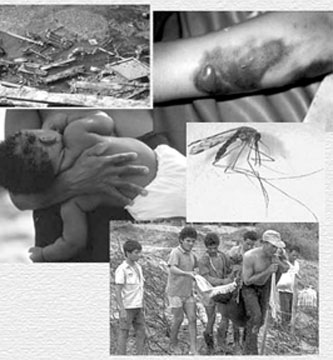 "We can make many plans and decisions at the national level but if
they are not carried out at the grassroots level, there is simply no
point," says Dr. Pannilahetti. According to her, the only means of
controlling the disease is by eradicating the breeding grounds of the
vector mosquito and maintaining a clean environment and for this, active
participation of the people is needed. "We can make many plans and decisions at the national level but if
they are not carried out at the grassroots level, there is simply no
point," says Dr. Pannilahetti. According to her, the only means of
controlling the disease is by eradicating the breeding grounds of the
vector mosquito and maintaining a clean environment and for this, active
participation of the people is needed.
"That's why we've called on the Education and Media Ministries, to
educate children as well as adults about the dangers and how best to
overcome it. Many people probably have the knowledge as to what to do;
we just need to translate that into behaviour so that they will take
appropriate action to see that breeding grounds are not provided for the
mosquito," said Dr. Pannilahetti.
"We have several ongoing programs to control the vector but the main
one is to destroy the breeding places for which we need active
participation of the people. Apart from this, we have larvicide programs
to kill the larvae of the mosquito and fogging programs to kill the
adult mosquitoes but these are only augmentary programs."
Asked about the BTI larvicide to be released in the market soon, she
cautioned that it was not the panacea to eradicate dengue, that people
might think it is. You have to spray it every 10 days for it to be
effective and people have this misconception that it can be used
everywhere. I certainly wouldn't recommend that you go around using it
on yoghurt cups and used tyres. The more viable option is to remove
those offending objects."
The task force which has proposed a 'National Plan of Prevention and
Control of Dengue Fever' has adopted the following components of the
Asia - Pacific Dengue Strategic Plan (2008 - 2015), published by the
World Health Organisation, to combat the problem:
Surveillance (collection of data), Integrated Vector Management,
Proper Case Management, Inter-sectoral coordination and Social
mobilisation, Emergency Preparedness and Outbreak Response and
Operational Research.
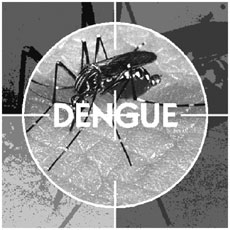 Dr. Hasitha Tissera, Consultant Epidemiologist at the Epidemiology
Unit, Ministry of Health, calls what they have seen so far as 'only the
tip of the iceberg.' Dr. Hasitha Tissera, Consultant Epidemiologist at the Epidemiology
Unit, Ministry of Health, calls what they have seen so far as 'only the
tip of the iceberg.'
"The majority of people who might have contracted the virus do not
develop the disease. About 75 percent of the people who are bitten by
the mosquito do not develop dengue but pass it on to others through
their blood stream.
Of the remaining 25 percent, half suffer only a fever. It is the rest
that develop the classic dengue symptoms. They too will have the disease
for 5-7 days and then recover but about 1-2 percent of this lot go
through what is known of as a 'critical phase.'
"It is of paramount importance to identify those who are susceptible
to this critical phase, which lasts only 48 hours and provide them with
adequate care."
According to the doctor, people who go into the critical phase leak
the liquid component of their blood, the plasma, from their blood
vessels, leading to thickening of the blood and inability of the body to
maintain the proper blood circulation. The body would then immediately
take steps to preserve circulation to the most important organs, the
heart and the brain, at the expense of the other organs, which would
then lead to organ failure.
This is why early detection of the critical phase is important,
according to him. The patient has to be in a hospital where 'judicious'
levels of fluids need to be given orally or intravenously to maintain
the optimal level of plasma.
"I say judicious levels because after 48 hours, the body will start
returning to normal and all the liquid ejected out of the vessels will
be re-absorbed. If there is too much liquid in the system, that too can
lead to problems," said Dr. Tissera.
The critical phase (also called the leaky phase) is what is known of
as 'shock' in dengue patients which could lead to death if unattended.
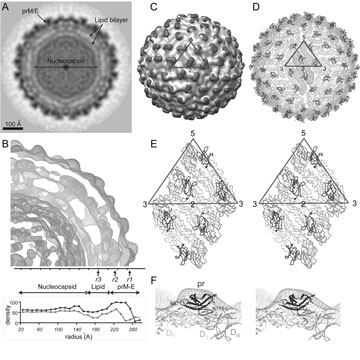 |
|
Dengue virus |
A few patients even show typical symptoms such as having no symptoms
of dengue but massive bleeding, irregular menstrual bleeding, bleeding
into organs of the body or myocarditis (inflammation of the heart).
These are just some of the other possibilities of the outcome and
shows the complexity of the disease, said the doctor.
"My advice to the community is, if you have a fever, consult a
doctor. But don't order a blood test on your own initiative, before
meeting the doctor. Let the physician call the shots. It is only on the
third day that a blood count will help detect dengue. Don't complicate
issues by getting a blood test as soon as you contract a fever and
having that read by a physician."
He also cautions that individuals who develop certain features need
to be rushed to hospital.
"If the fever reduces rapidly, sometimes to below normal
temperatures, there could be a problem. Conditions should return to
normal with a drop in fever but if there is loss of appetite, vomiting,
lethargy, cold feet or hands, abdominal pain, breathing trouble,
bleeding gums or general confusedness, these might be indicators of a
leaky / critical phase."
His advice is to be proactive members of the community and be
vigilant of the environment. "The breeding of dengue mosquito takes
place in our own backyards, schools and living rooms.
The mosquito thrives only on human blood and is found wherever there
is a dense human habitation.
Everyone of us has a responsibility to see that the mosquito does not
have a chance to breed in our discarded coconut shells, tyres, ground
level water tanks and flower vases.
The average man eating yoghurt in a train and tossing the cup out of
the window is responsible for spreading dengue. In order to reduce the
intensity of the density of dengue in the country, people have to be
educated, motivated and committed. That's the only way it can happen."
Obesity Indicators: BMI and neck circumference
by Susan Brady
While the medical community has long relied on Body Mass Index to
gauge body fat, they have acknowledged that this simple procedure has
its shortcomings. Body mass index (BMI) is a calculation that uses a
person's height and weight to estimate how much body fat they have.
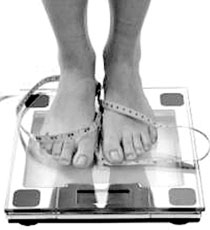 A BMI less than 18.5 is categorised as underweight, 18.5 to 24.9 as
normal or "healthy," 25 to 29.9 as overweight and 30 or higher as obese. A BMI less than 18.5 is categorised as underweight, 18.5 to 24.9 as
normal or "healthy," 25 to 29.9 as overweight and 30 or higher as obese.
However, the basic problem with this calculation is that it is solely
dependent upon height and weight, and makes assumptions about a person's
proportion of muscle and differences in bone density.
It therefore may overestimate adiposity on athletes and those with
more lean body mass while underestimating adiposity on the elderly and
others with less lean body mass. BMI also doesn't give information on
the location of the body fat, which is important in determining
obesity-related risk for disease.A new obesity indicator may have been
found to complement BMI and add accuracy to the measurement.
According to a study published with week in the journal Pediatrics,
measuring neck circumference can give better clues to body fat
composition.
It is also cheap, easy to do, less invasive than trying to find the
exact waist measurement, and is a more consistent measurement than the
waist.
A larger neck circumference has been linked to several health
problems, including diabetes, hypertension (high blood pressure) and
sleep apnea.
To assess the accuracy of this type of measurement, the study
utilized 1,102 children aged 6 to 18, recording neck circumference,
height and weight.
The researchers distinguished specific measurements for neck
circumference that indicated obesity.
For example, a 6-year-old boy with a neck circumference more than
11.2 inches was almost four times more likely to be overweight or obese,
based on BMI, as a 6-year-old boy with a smaller neck circumference.
According to lead author Dr. Olubukola Nafiu, "The correlationship
between regional adiposity and a high neck circumference is strong....
Taking such a measurement is inexpensive, easy and could be predictive
of health problems such as sleep apnea."
With an estimated 1 in 7 preschool-aged children considered obese,
the U.S. Preventative Services Task Force (USPSTF) has issued new
recommendations urging doctors to routinely screen children six years of
age and older for obesity and to refer them to intensive weight
management programs when necessary.
- Healthnews
Are vegetarians prone to iron deficiency anaemia?
by Dr. D. P. Atukorale -consultant Cardiologist
There is a misconception among Sri Lankan laymen, some Doctors and
Nutritionists mainly due to the meat industry propaganda that anaemia
especially iron deficient anaemia is common among vegetarians. You may
be surprised to know that a healthy vegetarian diet is an excellent way
to get all the iron, folic acid and other vitamins.
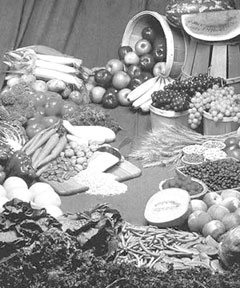 Iron deficiency anaemia is a common problem among meat eaters and
vegetarians. Vegetarian diet can provide normal iron requirements which
are normally obtained from dark green leafy vegetables such as gotukola,
niwithi soya products and whole grains. Iron deficiency anaemia is a common problem among meat eaters and
vegetarians. Vegetarian diet can provide normal iron requirements which
are normally obtained from dark green leafy vegetables such as gotukola,
niwithi soya products and whole grains.
Recent research has shown that consumption of iron rich foods such as
red meat may be a health hazard and people with high levels of serum,
iron and serum ferritin are prone to heart attacks.
There are a large number of research studies such as British
vegetarian study, studies done in Israel, Holland, Sweden, Canada and
China comparing haemoglobin (Hb) levels of vegetarians and meat eaters
to show that vegetarians are not prone to anaemia and that meat eating
is by no means necessary to prevent iron deficiency anaemia.
American Dietetic Association has concluded that vegetarian and
non-vegetarian diet, iron and folate supplements are usually necessary
during pregnancy although vegetarians frequently have a greater intake
of these nutrients.
There are about one million Sri Lankan vegetarians and there is no
medical evidence to prove that vegetarians are more prone to anaemia
compared to non-vegetarians.
Vegetarians do not have to worry about. T.V. advertisements which
advise people to eat fish and meat, as the vegetarian diet provides all
the nutrients necessary for the formation of haemoglobin.
Plant-based diet is superior to meat-based diet because they furnish
us all the nutrients including iron and all the vitamins in spite of T.V.
advertisements advising people to eat meat and fish to prevent anaemia. |

